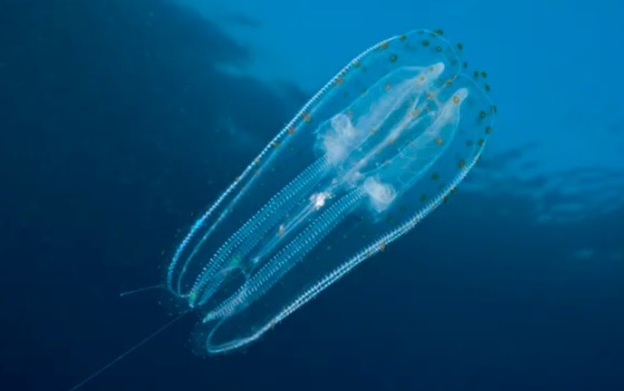
Which Came First: Sponges or Comb Jellies? The Ongoing Debate Over Earth’s Earliest Animals
Drawing from fossil evidence and genetic dating, researchers have long debated which animal emerged first on Earth, with the leading contenders being sponges and comb jellies.
Today, our planet teems with an incredible diversity of life, from microscopic tardigrades to the majestic 25-meter-long blue whale. This rich tapestry of animal life evolved over millions of years, but the question of which creature first graced Earth remains a hotly contested topic among scientists. Dozens of studies, employing everything from chromosomal evolution timelines to ancient fossils, have narrowed it down to two candidates: sponges and comb jellies, according to a report by Live Science.
Some of the oldest known animal evidence comes from Cambrian period fossils, dating back around 541 million years. This era witnessed a remarkable explosion of new species, with hundreds of thousands of animals appearing suddenly over a span of just 10 million years. Nearly every basic body plan of animals that we see today evolved during this Cambrian explosion, including arthropods, mollusks, and even the chordates, which eventually led to vertebrates. Fossils found in the Burgess Shale formation in British Columbia provide a glimpse into the appearance of these early animals.
However, not all animals appeared out of nowhere during this period. In the 1950s, scientists identified earlier fossils as remnants of animals from the Ediacaran period, which spanned from about 635 million years ago until the start of the Cambrian, 541 million years ago. Unlike the hard exoskeletons found in many Cambrian fossils, Ediacaran animals were mostly soft-bodied, including jellyfish, sea anemones, sea worms, and sponges. Because soft tissues decay more easily than bones or exoskeletons, Ediacaran animal fossils are not only rare but also challenging to analyze. One of the best-known examples is Dickinsonia, a worm-like creature resembling a large disc with radiating tentacles.
In 2021, Elizabeth Turner, a paleontologist at Laurentian University in Ontario, proposed in the journal Nature that the oldest known animal might be an 890-million-year-old fossil specimen of a sponge. However, her hypothesis hasn’t won unanimous support among experts.
All the evidence about early animals so far comes from fossils in rocks that can be dated using their isotopes, which decay at a steady rate over time. Recently, though, a new method called molecular clock modeling has gained popularity. Based on the assumption that genes mutate at a regular rate, scientists can analyze the genomes of modern animals to determine when they first appeared. A 2023 study using chromosomal data from comb jellies suggests that these creatures may have been the first animals, emerging around 600-700 million years ago.
Yet, Nick Butterfield, a paleontologist at the University of Cambridge, remains skeptical of both hypotheses. He argues that if animals had existed 890 million years ago, we would find evidence such as biomineralization, where molecules from animal organic material cause surrounding minerals to crystallize. But the earliest known biomineralization dates back only 750 million years.


